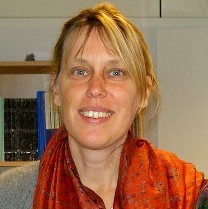News
Helping Pregnant Women Deliver Safely -- On the Ground and in the Air
- 31 August 2005
News
AMSTERDAM, The Netherlands —Dr. Wilma Doedens has helped to make motherhood safer for Sudanese refugees in Chad, for tsunami-affected women in Sri Lanka, and for women displaced by war in the Congo. But delivering a baby at 30,000 feet was something new.
Dr. Doedens – a technical specialist for UNFPA, the United Nations Population Fund – was on a flight from West Africa to her native Holland last month when the pilot made a sudden announcement: a passenger had unexpectedly gone into labour. Was there a doctor on the plane?
“It was all very sudden,” says Dr. Doedens. “But I’ve performed deliveries in far more difficult settings, so I’m used to improvising.
“It was very similar to a refugee situation where there’s no hospital or we can’t get to one in time.”

In refugee camps and other emergency settings around the world, UNFPA deploys clean delivery kits that include plastic sheeting to lay on the ground, soap for washing hands before assisting delivery, a clean razor blade and string to cut and tie the umbilical cord, and a blanket to protect the newborn baby from hypothermia. The kits also include pictorial instruction sheets, to aid untrained birth attendants.
Dr. Doedens and the flight crew had most of these necessities as they prepared for a possible child delivery on the plane, but they had to improvise for some items. There was no plastic sheeting so the flight crew ripped open a large plastic bag, which they laid on the floor to protect the expectant mother from germs. When her obstetric examination revealed that the baby would probably arrive while the plane was still over the Algerian Sahara – far from a major airport or hospital – Dr. Doedens sent a flight attendant to boil water to sterilize scissors for cutting the umbilical cord.
Cutting the cord without a clean instrument – such as the new razor blades in the clean delivery kits UNFPA provides in refugee settings – can lead to neonatal tetanus, which can be fatal for newborns.
Dr. Doedens was also concerned about the mother.
“It was looking to be a routine delivery,” she said, “But still we were nervous as 15 per cent of all women in labour develop complications requiring emergency obstetric care, and if that happened here we might not make it to a hospital in time.”
Dr. Doedens examined the mother and took the woman’s blood pressure to check for hypertension, which can lead to a dangerous condition known as eclampsia.
Two hours after Dr. Doedens was first summoned, it was time. The doctor guided the baby’s head and shoulders to prevent serious tears. Once through the birth canal, the baby began to cry immediately – a healthy sign – and Dr. Doedens placed the baby on her mother’s chest, cut the cord and announced, “It’s a girl!” The flight attendants embraced excitedly. The mother named the baby Mandy.
Immediately after cutting the cord, Dr. Doedens followed the standard obstetric process of injecting the mother with the drug ergometrin – which the plane carried on board – to prevent post-partum haemorrhage. Finally, she made sure that the placenta was fully expelled, another possible cause of infection, and that the mother was comfortable.
Untreated complications of pregnancy and childbirth kill one woman every minute in the developing world. Although virtually all births in the developed world are attended by skilled health personnel, only 34 per cent of births in the world’s poorest countries are assisted by a trained birth attendant. In many of the refugee settings where Dr. Doedens usually works, this figure is even lower.
Part of Dr Doedens’ job is to make sure that communities and humanitarian partners are aware of the minimal steps and materials needed for a clean delivery, as well as the importance of a skilled attendant and backup medical assistance should complications arise.
Dr. Doeden’s work for UNFPA carries her to some of the world’s most troubled places.
Last year, she and partners from the Women’s Commission for Refugee Women and Children visited camps for Sudanese refugees in Chad to assess the quality of maternal care. In response to their finding that many health clinics lacked the basics for clean childbirth, UNFPA shipped additional delivery kits and stepped up its collaboration with local and international partners to improve the quality of maternal health services, including emergency obstetric care.
At the beginning of this year, Dr. Doedens spent several weeks in Sri Lanka helping the UNFPA country office and local partners to address reproductive health needs in the wake of the devastating tsunami that displaced more than one million Sri Lankans. One major maternal hospital in the south of the country had been completely destroyed. UNFPA moved rapidly to restock the hospital with tents and medical equipment and supplies needed to provide emergency obstetric care. The Fund also made sure that other referral hospitals damaged by the tsunami had the surgical equipment and drugs they needed to perform Caesarean sections in cases of extreme danger to mother and baby.
An airplane is not the ideal place to deliver a baby. But unlike many refugee women, Mandy’s mother was attended by a trained birth attendant, with the knowledge and basic necessities to take mother and child through the process safely.
--David del Vecchio